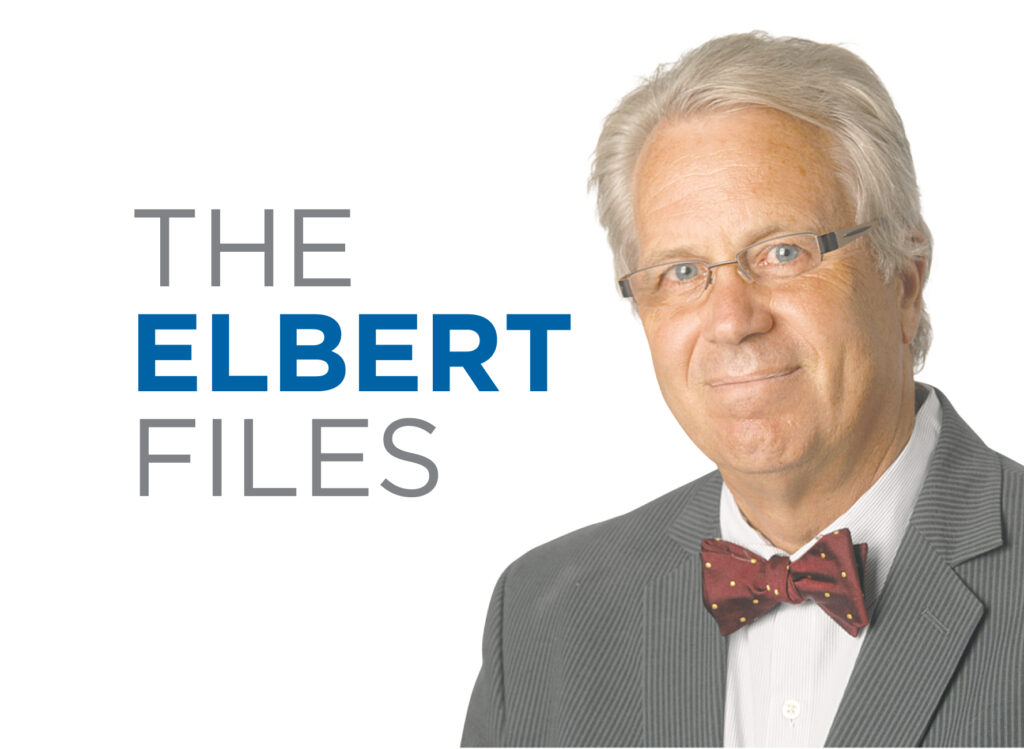The Elbert Files: Transistor radios

In the summer of 1961, my transistor radio, turned to full volume, played “Runaway” by Del Shannon, “Will You Still Love Me Tomorrow” by the Shirelles, and “Raindrops” (my favorite) by Dee Clark.
While the radio played, my cousin Mike and I painted a two-story duplex owned by our Great-Aunt Gussie in Ames. Without the radio and that music, I doubt we would have finished the job.
I was reminded of Gussie’s house recently when Garrison Keillor’s Writer’s Almanac marked the 70th anniversary of the first transistor radio debut on Oct. 18, 1954.
Before the transistor, Keillor wrote, “radios were mostly big, bulky devices that stayed in one place — usually in the living room — while the whole family gathered around to listen.”
The first transistor radio, “half a pound and could fit in your pocket,” he explained, adding: “With transistor radios, teenagers were able to listen to music out of their parents’ earshot. This made possible the explosion of a new genre of American music: rock and roll.”
I was 14 in 1961 and my transistor radio was my most prized possession, a nearly
constant companion.
It was the baby boomer equivalent of an iPhone or Apple Watch. My General Electric radio was my first significant consumer purchase with my own money. Transistor radios shaped the music, sports, politics and lifestyles of my generation.
Keillor explained that transistor technology was invented in 1947, the year I was born, and that over a relatively short time span, it revolutionized consumer products by making hand-held electric devices possible.
Before the transistor, the workhorse of early consumer electronics was the vacuum tube. Invented around the turn of the 19th century, vacuum tubes were bulky, fragile, slow to warm up and required a lot of power.
Bell Laboratories patented the transistor in 1947, but the concept went back to the 1920s when physicist Julius Edgar Lilienfeld filed for patents in Canada (1925) and the United States (1926 and 1928).
Unfortunately, Lilienfeld was ahead of his time. Rutgers University’s John Vardalas wrote in 2003 that Lilienfeld’s concepts were on the right track but could not be tested because “the production of high-quality semiconductor materials was still decades away.”
Bell Laboratories’ great discovery in 1947 was that, when two gold point contacts were applied to a crystal of germanium (soon replaced by silicon chips), the signal produced was stronger than the input.
“It was the very first solid state device capable of doing the amplification work of a vacuum tube,” and “spawned an entire industry and ushered in the Information Age,” according to a 2013 article for the American Physical Society.
Bell Labs created a prototype transistor radio on June 30, 1948, but soon began licensing its technology to others who would develop radios for the commercial market.
An early licensee was a partnership between Texas Instruments, which at that time made instruments for the oil industry, and IDEA, an Indianapolis company that made TV antennas.
Texas Instruments designed the guts for a new radio and IDEA handled the manufacturing. On Oct. 18, 1954, they unveiled the TR-1 transistor radio, which sold for $49.95. The TR-1 had only four transistors, and reviewers said its sound quality was poor. Only 100,000 were sold.
A few months later in February 1955, Raytheon came out with an $80 transistor radio that had better sound from a larger speaker, eight transistors and less expensive batteries.
The race was on. Other manufacturers also came out with transistor radios in 1955, including a Japanese company that would be rebranded as Sony.
Sony’s TR-63 was the first transistor radio to sell in the millions. Its success brought in other Japanese and Asian manufacturers. By 1964, you could not buy a transistor radio with only U.S. components.
Driving sales were teenagers, like myself and Bruce Springsteen, who talked about the significance of the transistor radio in 2021.
“The power and importance of my radio could not be overstated,” Springsteen said. “I lived with it, tucked it in my schoolbag during the day and beneath my pillow at all hours of the night.”

Dave Elbert
Dave Elbert is a columnist for Business Record.





